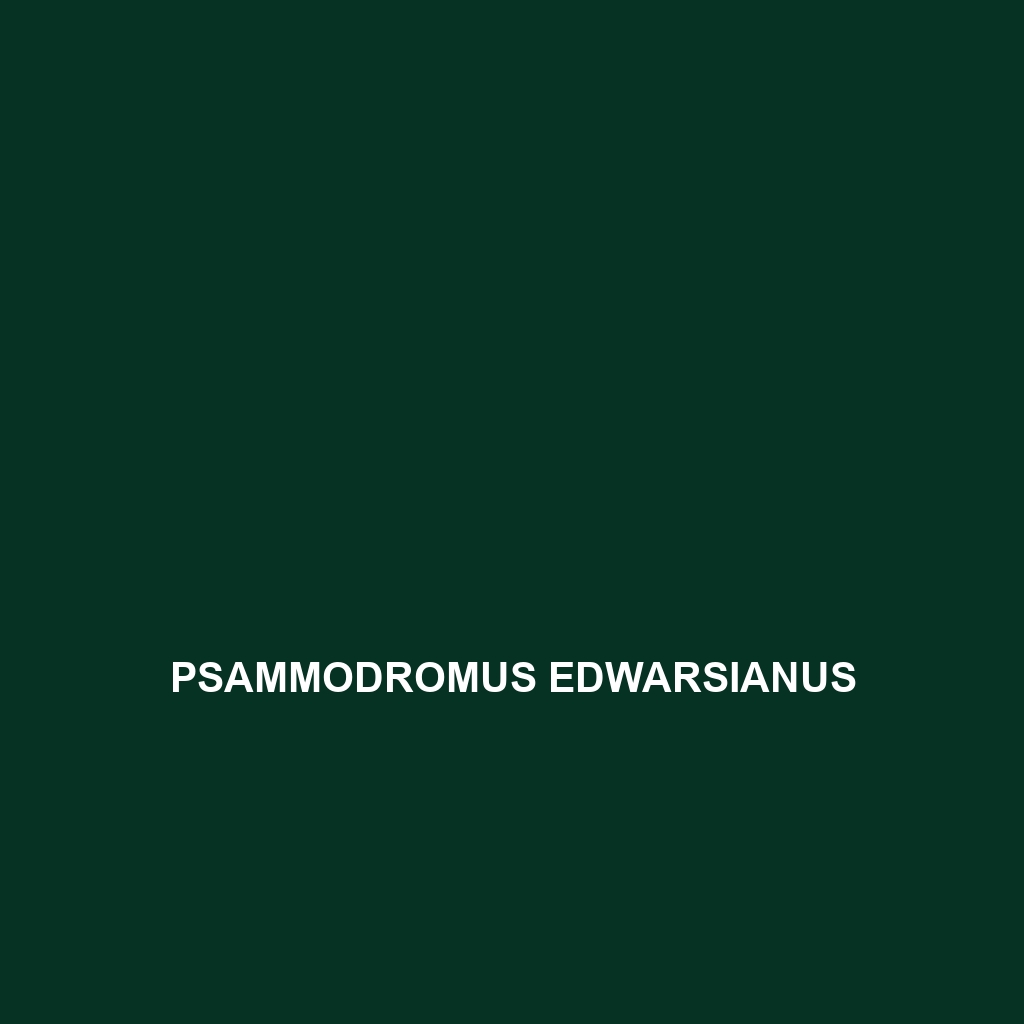Common Name
Psammodromus blanci
Scientific Name
Psammodromus blanci
Habitat
Psammodromus blanci primarily inhabits the warm, arid regions of southwestern Europe. This species thrives in a variety of environments, including sandy plains, dry grasslands, and temperate forests that receive low to moderate rainfall. The ideal habitat often consists of loose soil or sandy substrate, enabling them to burrow effectively. Consequently, Psammodromus blanci is often observed in areas like the Mediterranean Basin where the climate is characterized by hot, dry summers and mild, wet winters. These reptiles are also found near scrubland and shrubland, showcasing their adaptability to diverse ecological settings.
Physical Characteristics
Psammodromus blanci is a slender, elongated lizard known for its distinctive coloration. Adults typically reach lengths of 20 to 30 centimeters. Their dorsal surface is adorned with a mix of light brown and gray hues, often exhibiting dark stripes running lengthwise along their bodies. Their smooth, glossy scales allow them to blend seamlessly into their environment, enhancing their camouflage from predators. One notable feature is their elongated limbs and pointed snout, which assist in rapid movements across sandy terrains. The vibrant coloration, particularly during mating season when males display more vivid patterns, adds to their appeal among reptile enthusiasts.
Behavior
Psammodromus blanci exhibits diurnal behavior, being most active during the daytime and often seen basking in the sun. They are known for their agility, darting rapidly in and out of sandy crevices when threatened. Social interactions typically occur during the breeding season, where males engage in elaborate displays to attract females. These displays include head-bobbing and push-up movements, showcasing their fitness and vitality. While they do not migrate seasonally, they may shift their range to find optimal temperatures and food sources throughout the year. Their well-developed instincts enable them to evade predators, making them remarkably adept at survival in their native habitats.
Diet
Psammodromus blanci is primarily insectivorous, feeding on a variety of invertebrates such as ants, beetles, and caterpillars. Their foraging behavior typically entails a keen search for food during the warmer parts of the day when prey is most active. They employ a sit-and-wait strategy, relying on their camouflage to ambush unsuspecting insects. Occasionally, they may consume small plant matter, indicating a slight omnivorous tendency. This diverse diet is crucial for their survival, especially during the hotter months when food sources can be scarce.
Reproduction
The reproductive cycle of Psammodromus blanci typically begins in early spring when males exhibit heightened courtship behaviors. Mating occurs shortly after, with females laying clutches of 4 to 10 eggs in sandy nests during the summer months. The incubation period lasts about 6 to 8 weeks, with hatchlings emerging during late summer or early autumn. These young lizards are precocial, meaning they are relatively mature and capable of independent survival from the moment they hatch. Parental care is minimal, with adults leaving the hatchlings to fend for themselves, a common trait among many lizard species.
Conservation Status
The conservation status of Psammodromus blanci has been categorized as Least Concern by the International Union for Conservation of Nature (IUCN). While this species currently faces no significant threats, habitat destruction due to urbanization and agricultural expansion remains a concern. Conservation efforts focus on protecting their natural habitats to ensure the longevity of their populations. Monitoring programs are in place to assess population health and habitat changes that could affect their survival.
Interesting Facts
One fascinating feature of Psammodromus blanci is its remarkable ability to blend into its surroundings, showcasing an impressive degree of camouflage that protects it from predators. Additionally, during the mating season, males showcase vibrant colors and heightened displays, making them a spectacle for wildlife enthusiasts. Scientific studies have demonstrated that these lizards can tolerate higher temperatures in extreme summer conditions compared to many other reptiles, illustrating their adaptability to changing environments.
Role in Ecosystem
Psammodromus blanci plays a vital role in its ecosystem as both a predator and prey. As insectivores, they contribute to controlling insect populations, helping to maintain ecological balance. Additionally, they serve as a food source for larger predators such as birds of prey and other carnivorous reptiles. Their burrowing behaviors can aid in soil aeration and contribute to the health of their habitat. By participating in the food web, Psammodromus blanci underscores the interconnectedness of species and the importance of biodiversity within their ecosystems.
